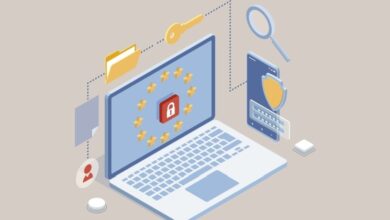Personalization In Instructional Design: Customized Learning


Personalization Strategies In Instructional Design
In the rapidly evolving landscape of education, the one-size-fits-all approach to learning is becoming increasingly outdated. Today, Instructional Designers are tasked with creating eLearning experiences that cater to a diverse audience’s unique needs, preferences, and learning styles. Personalization in Instructional Design is not just about enhancing the learning experience; it’s about revolutionizing it and making learning more relevant, engaging, and effective for each individual. This comprehensive article explores the strategies and technologies that can help Instructional Designers create truly personalized learning experiences.
Understanding Personalization In Instructional Design
Personalization in Instructional Design refers to the customization of learning experiences to fit the individual characteristics of each learner. This can include adapting content, pacing, learning paths, and instructional methods to meet different needs and preferences. The goal is to provide a more engaging and effective learning experience that can lead to improved outcomes.
The Importance Of Personalized Learning
Research has consistently shown that personalized learning can lead to higher engagement levels, better retention rates, and improved learning outcomes. Personalized learning experiences can help learners feel more connected to the material, increasing motivation and the likelihood of successful knowledge transfer and application.
Strategies For Implementing Personalized Learning
1. Learner Profiling
The first step toward personalization is understanding who your learners are. This involves creating detailed learner profiles beyond basic demographics, including learning styles, knowledge levels, interests, and goals. Surveys, pre-assessments, and data analytics tools can be used to gather this information.
2. Adaptive Learning Paths
Once you have a clear understanding of your learners, the next step is to design adaptive learning paths that can adjust based on an individual’s progress, strengths, and areas for improvement. This can involve branching scenarios where learners choose their path through content or more sophisticated adaptive algorithms that automatically adjust the difficulty level of material.
3. Flexible Content Delivery
To accommodate different learning styles and preferences, offer content in multiple formats—text, video, audio, interactive simulations, and more. This caters to different preferences and reinforces learning through multiple modalities.
4. Feedback And Support
Personalized feedback is crucial for effective learning. Incorporating mechanisms for both automated feedback (such as quizzes and interactive exercises) and personalized feedback from instructors can help learners understand their progress and areas needing attention.
5. Leveraging Artificial Intelligence (AI) For Personalization
Artificial Intelligence, including technologies like ChatGPT, can play a significant role in personalizing learning. AI can analyze learner data in real time to provide personalized content recommendations, adaptive learning paths, and targeted feedback, creating a learning experience that evolves with the learner.
Implementing Personalization In Instructional Design: Practical Tips
- Start small
Begin with one aspect of your course to personalize, such as offering different content formats or branching scenarios, and gradually expand your personalization efforts based on feedback and results. - Use technology wisely
Leverage Learning Management Systems (LMSs) and AI technologies that support personalization features. Many modern LMS platforms come with built-in analytics and adaptive learning capabilities. - Continuously gather data
Use analytics and feedback tools to collect learner engagement, performance, and preferences data continuously. This data is invaluable for refining and enhancing personalization strategies. - Involve learners in the process
Give learners choices where possible, such as selecting topics of interest, choosing project formats, or setting learning goals. This empowers learners and makes the learning experience more relevant to their needs and aspirations. - Foster a supportive community
Encourage interaction among learners through discussion forums, peer reviews, and group projects. A supportive learning community can enhance the personalized learning experience by providing diverse perspectives and peer support.
Real-World Examples Of Personalized Learning
1. Coursera
Coursera uses adaptive algorithms to recommend courses and specializations based on learners’ interests, past course activity, and career goals. This personalization enhances the learning experience by making it more relevant and targeted.
2. Duolingo
Duolingo offers personalized language learning experiences, adjusting lessons based on the learner’s proficiency level and learning speed. It also uses gamification and immediate feedback to keep learners engaged and motivated.
3. Knewton Alta
Knewton Alta provides adaptive learning experiences in higher education, using data analytics to create personalized learning paths for students in various subjects. The platform adjusts in real time based on student performance, offering targeted instruction where needed.
Conclusion
Personalization in Instructional Design is a powerful approach that can significantly enhance the effectiveness of eLearning experiences. By understanding and addressing individual learner needs, preferences, and learning styles, Instructional Designers can create more engaging, relevant, and successful learning journeys.
Source link



